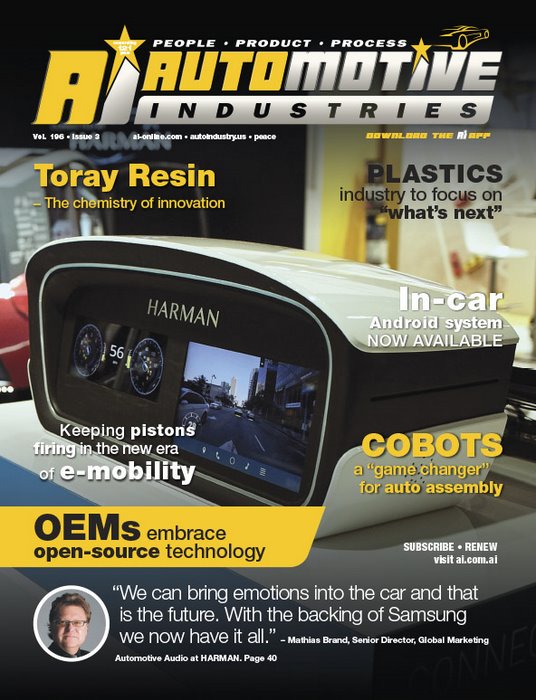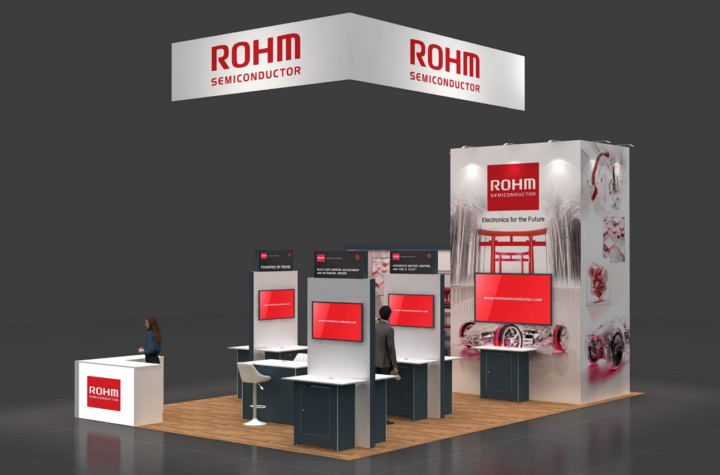
According to the World Health Organization, road injuries are among the top 10 causes of death worldwide.
Working with HARMAN, which it acquired earlier in 2017, Samsung has established a US$300-million fund to support the development of the connected car and autonomous technologies, including smart sensors, machine vision, artificial intelligence, high-performance computing, connectivity solutions, automotive-grade safety solutions, security, and privacy.
In addition, HARMAN has established a new Autonomous/ADAS Strategic Business Unit (SBU) which will report to HARMAN’s Connected Car division, and will work with the Samsung Strategy and Innovation Center (SSIC) Smart Machines team to develop key technologies for safer, smarter, connected vehicles.
Samsung and HARMAN will focus on engineering, high-performance computing, sensor technologies, algorithms, artificial intelligence, as well as connectivity and cloud solutions that enable Advanced Driver Assistance Systems (ADAS) and automated driving. Samsung has secured licenses for on-road testing of autonomous driving software and hardware under development in Korea and California.
Automotive Industries (AI) asked Hans Roth, Senior Director Technology Marketing HARMAN, how the company is humanizing the autonomous car.
Roth: We have an increasing focus on the “passenger economy,” creating a user experience that is connected, personalized and intelligent – and most importantly puts the occupant first. That user experience inside the autonomous car will be very important. As consumers, our requirements are changing and increasingly the experience has become the deciding factor.
Historically, it was about the pride of ownership, and now it is more and more about experience. This generation will expect to have all the functionalities in their car that they enjoy at home and with our knowledge of consumer products, HARMAN is perfectly placed to deliver this end-to-end seamless experience.
AI: What are the challenges in creating a connected, personalized and intelligent experience?
Roth: Historically there were three main applications – navigation, telephony and the media player. This is changing and there is more freedom as to the content that can be offered. But first you need to provide a secure and fast connection to the cloud to access your personal social, content and productivity channels as well as e-commerce.
Generation Y is used to living in a virtual world. It is all they have known. It is their primary interface and they expect access to this world wherever they are, so you need high data bandwidth with 4G and then 5G. Personalization is a crucial part. In the longer term, it will very likely be a shared vehicle and you will need highly secure and robust identification to recognize who is in the vehicle. That may come from your smart phone, iris scan or biometrics.
We are working on flexible solutions too. You could have different passengers in every seat who all want their own content with their own displays. That’s what we are showing with the Oasis. The third thing to bring into the car is the AI to provide the personal assistance we are now used to at home. One of the challenges is that people have different assistants – Alexa, Bixby, Cortana, Google, Watson.
The personal assistant must understand what it is being asked to perform and provide information proactively without waiting for response. Contextualization is a very critical part of what we are working on. We have to provide the right context to these different personal assistants to ensure they are always a step ahead.
AI: What are the key components for the car of the future?
Roth: For now, an integrated cockpit with a powerful computing platform as the control center, cloud integration, over-the-air updates and a top-notch security architecture. The first of the key components is a single, cost-effective computing platform that provides a seamless user interface across all displays.
The second element is reliable connectivity. The Telematics Control Unit (TCU) will get smarter, running applications and providing cyber security inside the car and for the outside network through an over-the-air updating service.
Other key components will be the sound system, the displays and the input and output devices. With Samsung we now have access to the very latest technologies from the consumer world, not just automotive, which gives us a very big advantage.
For autonomous driving Samsung just announced it is working on a new open source platform. Autonomy is our sixth pillar in addition to telematics, the cockpit, cybersecurity, the cloud and the user experience.
AI: What is next for HARMAN?
Roth: Now that we are a member of the Samsung Electronics group we have access to a lot of new and powerful technologies. We have a powerhouse behind us which can help accelerate innovation within our pillars. We call it the “Revolution of the Evolution” as new innovations by HARMAN and Samsung take us to a new level.
AI then asked Mathias Brand, Senior Director, Global Marketing Automotive Audio at HARMAN, to share what is happening in the audio field.
Brand: We believe premium audio will be standard for each and every car in the future, and the industry is recognizing this. Consumers want premium audio as part of their lifestyle. There is an expectation to have a seamless experience from the living room into the car.
You want the same system you have in your home to be in your car, the place where you spend so much time. This is good for the automotive industry and for car dealerships as it develops loyalty for the car and brand. We have to use the emotional space of audio and music as a selling point.
AI: What are some recent examples?
Brand: We were featured in a number of the vehicles that premiered this year. One was the Bentley Continental GT, which features our Bang & Olufsen (B&O) system. Another recent win is the Ford B&O Play in two models. The B&O play is wonderful value for money. In addition, Audi is launching the A8 with the B&O Advanced system, a very high-end 3D system, which is very much improved from the previous model.
AI: Are you focusing on creating systems for all levels of cars?
Brand: We want to provide the best listening experience in all cars, no matter how big the car is or whether it is a luxury car. We have scalable platforms, systems and components. If you don’t have space, and the car is really very small, you can put our superflat KiNETiC speakers in the dashboard. OEMs will need this type of technology for mini and autonomous cars.
AI: How do you see the global car audio market developing?
Brand: The interesting part for our company is that all the OEMs use what we are doing to sell cars. BMW is talking about inspiring, about emotion and about a lifestyle. Mini is talking about urban mobility, creating vision with passion. This lifestyle element is exactly what we are delivering. We can bring emotions into the car and that is the future.
With the backing of Samsung we now have it all. The more autonomous the vehicle, the more freedom you have to take your hands off the wheel. Either you work, or you are entertained. For entertainment the quality of the audio is very important.
This means that good automotive audio has a bright future. People are drawn by trusted lifestyle brands, and we have a competitive advantage in that we are working with 11 brands. We can select the right brand for each and every partner or potential partner using semiotic studies. After understanding the look and feel of the vehicle and the key values and positioning of the brand we are able to find the perfect fit.





More Stories
Baja SAE Carolina:
ROHM to Showcase Advanced Power Electronics at APEC 2025
ROHM Launches 650V GaN HEMT in a Compact, High-heat Dissipation TO-Leadless Package